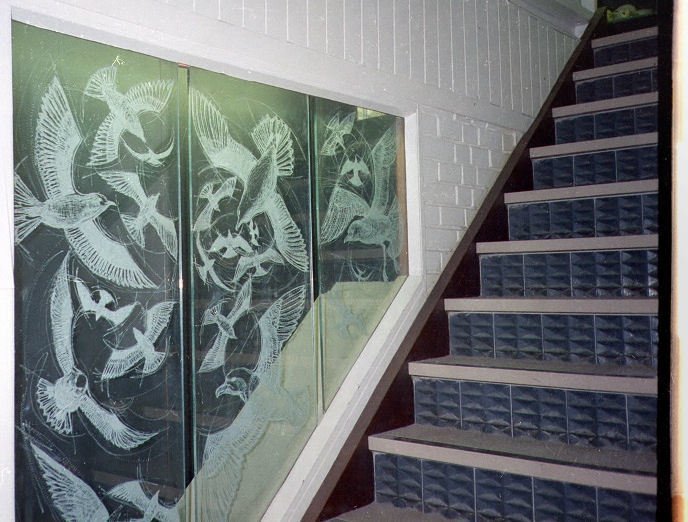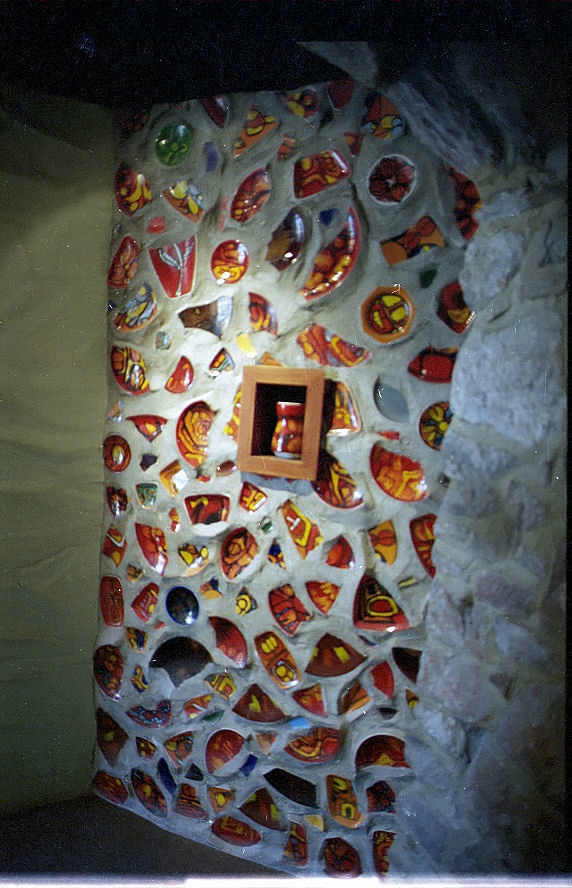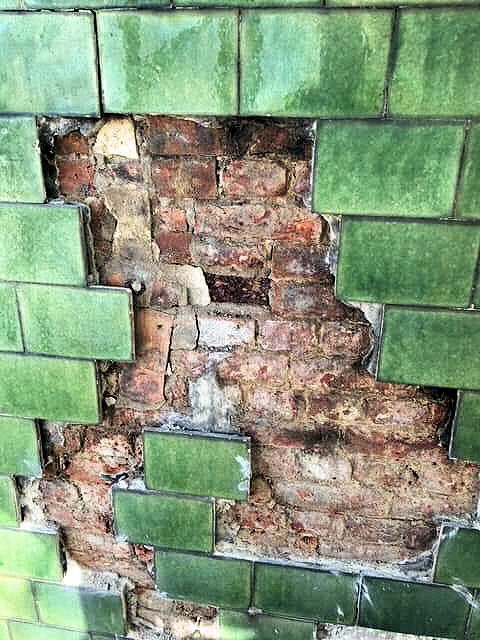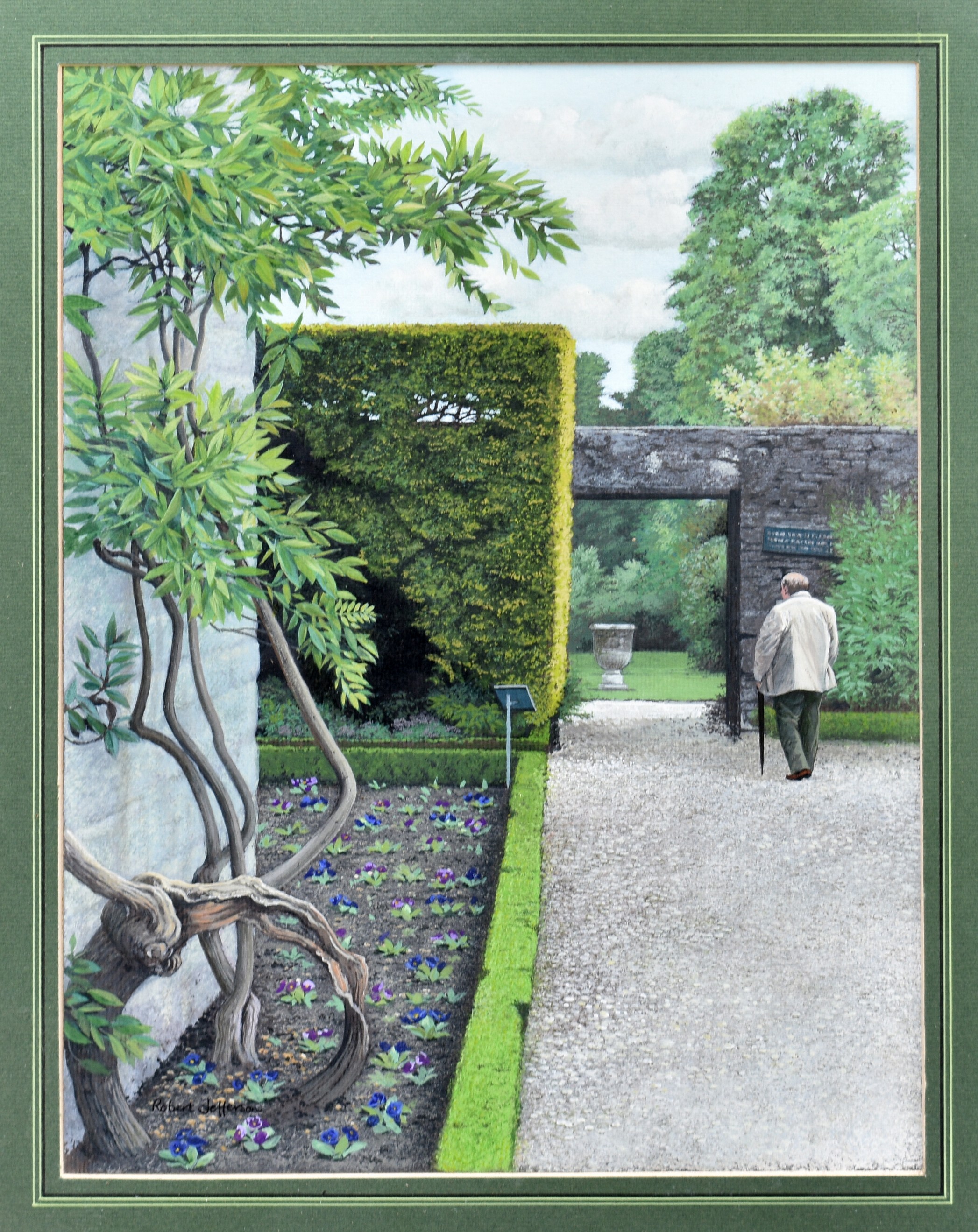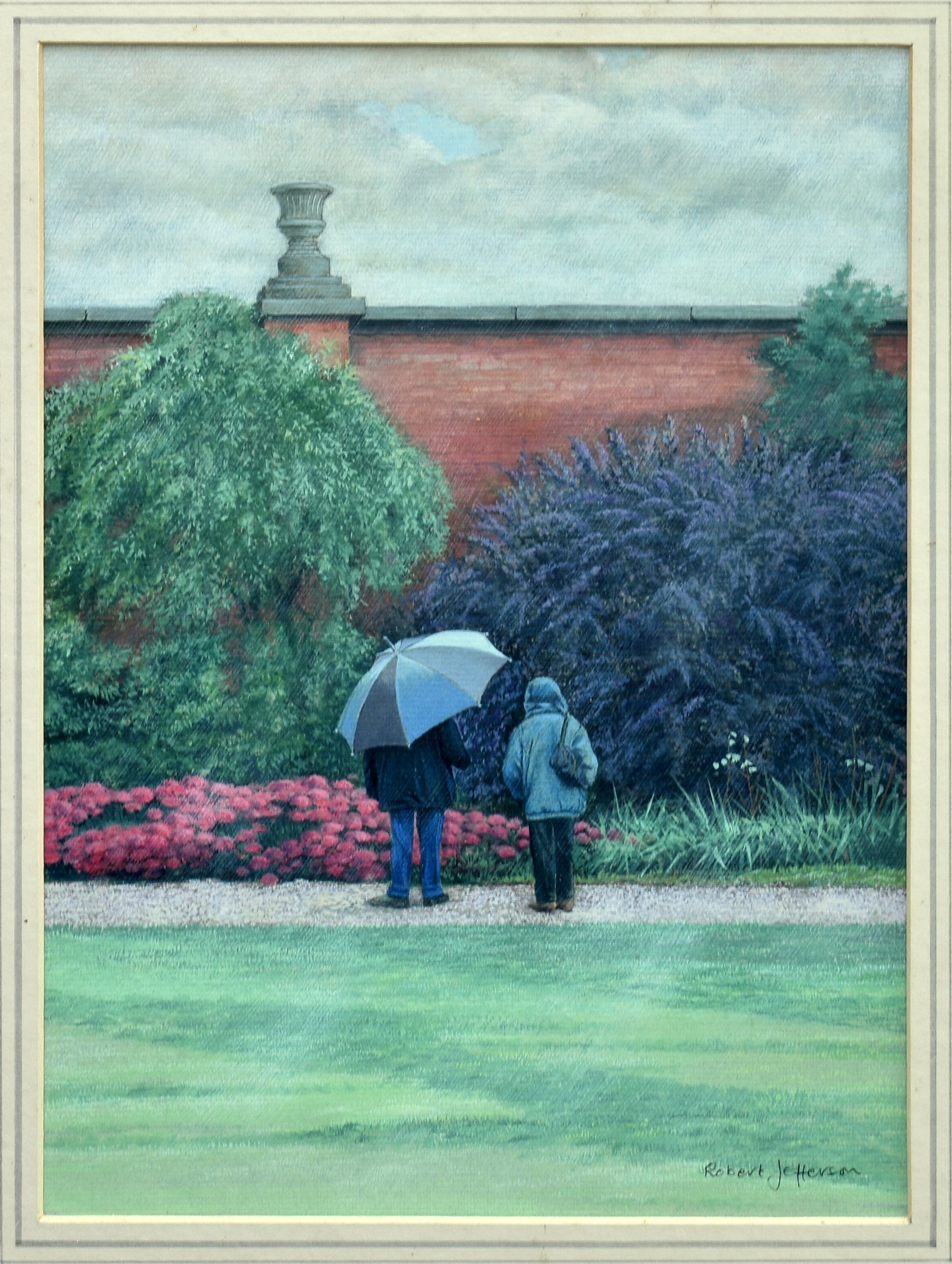
once in a while a picture turns up which claims the top spot. This will find its way Into the guy sydenham exhibits shortly, although THe star of the show is not Guy, but Non Shaw (6) standing in front of her mother Joy in 1953. The image was taken by Non’s father Peter. Thank you Tina Joy for sharing this truly charming piece of FAMILY and social history.
This is the third version of the Virtual Museum. Earlier versions were hosted by Microsoft but the service (which was originally free) is no longer available and the data has been transferred (with much help from Kasia) to Squarespace. There is now a 'blog' facility (here) but for the moment it is not 'live' as I do not have time to moderate the content of postings by others. So, for the moment the pages will be used to notify updated content and for general information.

About
The Museum began as a photographic record of one collection.The first photos were taken by Michael Jeffery of Woolley and Wallis in Salisbury (who continues to support the Museum by allowing access to a comprehensive archive of past auction lots).
Other collectors have donated images or allowed their collections to be photographed. The present collection represents a 10 year accumulation of images.
Below- the reredos at St Michael's Hamworthy, courtesy of Jo Amey (aka The Tile Lady). Jo gives guided tours of Poole Old Town and central Bournemouth exploring the tiles and ceramics of the local buildings.
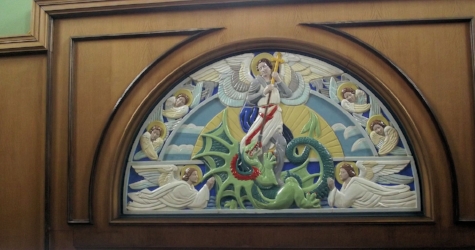
'The Bonawe loading china clay at Poole' - pencil and watercolour by Maurice Clarke.
This painting was for sale at Greenslade Taylor Hunt in Taunton and the description is from the artist's label, verso. The scene dates from around 1906.

But why would china clay be loaded on to a coaster in Poole? The nearest china clay production was in Devon and Cornwall. Many thanks to Poole Museum, Purbeck Mineral and Mining Museum - and John Pike of the Ball Clay Heritage Society who says this:-
It appears to me that the coaster is loading ball clay in lumps from the barge lying alongside, using baskets or buckets. The clay would have been transported from the clay pits near Wareham to one of the wharves on the western side of Poole harbour where the barge would have been loaded. The natural water content of clay is about 15-20% in which state it is quite 'plastic'. However if it dries out - which happens in dry weather conditions - it becomes very powdery without any milling because of its extremely fine particle size (much finer than china clay). This can give rise to very dusty conditions - that in the context of current health and safety regulations can be quite problematic! The painting perhaps slightly over-dramatises the dust but I can imagine that it is not altogether unrealistic.
Since the 1930's ball clay has been produced in a milled powder form but it has to be transported in paper sacks which would not give rise to dust during loading unless the sacks were damaged.
I feel sure that the description of the material as china clay is incorrect, but this is a mistake that is made very frequently as china clay is much better known than ball clay. As you mention, china clay would certainly be delivered by sea to the potteries in Poole but that would have been discharged from the coasters directly onto the quay. I think it is unlikely, from both practical and contractual points of view, that the coaster would have been loading ball clay and unloading china clay at the same time.
The white colour of the dust is like that of ball clay powder, despite ball clay generally being slightly grey 'as dug'.
I hope that helps.
Thank you. The painting has been restored and has gone to a good home - The Ball Clay Heritage Society.

Above - The Bonawe (shown alongside Poole Quay above) aground in Killala Bay on the West Coast of Ireland in 1951.

Above and below - ‘The Quay Experience’ - the tile panel in the cafe/restaurant at the Poole Quay building, prior to its closure.
The Poole Arms, Poole Quay
The Poole Arms is said to be the oldest pub on Poole Quay, dating from the 1600's. The green (Carters) tiles and Poole coat of arms were trademarks of Marston's Dolphin Brewery of Poole and date from the early 1900's. Given the southerly aspect and waterside location the tiles had fared pretty well.

Above -photographed prior to the recent (2018) restoration work (below).
Left - life-like printed sheet protecting the scaffolding and restoration work. Right - restoration work completed.

The fish is recommended
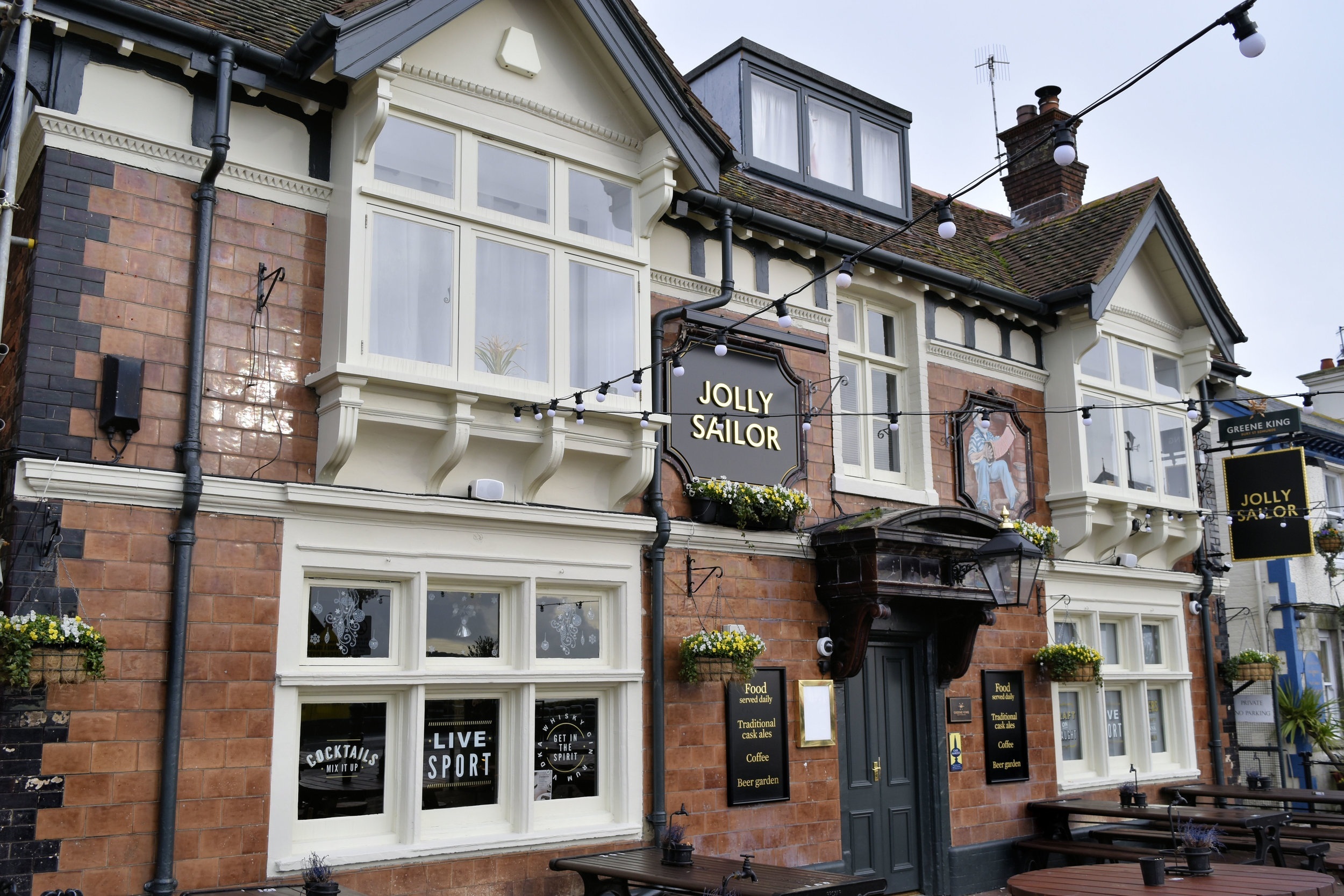
Fawn Carters tiles on the Jolly Sailor, Poole Quay
With thanks to Rugby Art Gallery and Museum ……

PHOTO Rugby Art Gallery and Museum
Carters ceramic panel made for Rugby High School , 1927. It was originally set into the gable end of the School’s assembly hall and was donated to Rugby Art Gallery and Museum by the Rugby High School Old Girls’ Society when the building was demolished.
WH Smith’s advertising tile panels
The Museum of London Archaeology have very kindly agreed to make available their photographic record of the Carters tile panels at WH Smith’s Newtown Powys store (and museum). Some of the (40 or so) different designs on display are shown in the Carters Tiles section.

The designer of the W H Smith tiles is unknown, but do the suitcase initials on the Newtown Powys ‘Travel Books’ tile panel offer a clue? Any suggestions?

Cottees 22nd September 2018
One of a pair of interesting dishes with no markings (probably trials) with the kiln and dolphin trademark designed byArthur Nickols, part of a mixed lot sold by Cottees today.

New Tile panel added to the Tony Morris 1993 - 2002 section

Carters’ Athletic Football Club annual dinner menu, 1934-35

Joan Sydenham
1920 - 2019
Robert Jefferson enamelled plaque

After Poole Pottery - an enamelled steel plaque by Robert Jefferson. Some more examples are illustrated in ‘The Quiet Virtuoso’ by Rena Jefferson.
Apollo Stained Glass
The use of wax resist and bold glazes by Tony Morris in the 1960’s often gave designs more than a passing resemblance to stained glass.

This has been taken to its logical conclusion by Apollo Glass in Woolwich who have based a stained glass panel design around a 1960’s TM pollarded tree.
Verdict? Every home should have one.

Above - Ron Goodwin spray decorating a faience sea lion, part of the contract for the SS Transvaal Castle launched in 1961.
Below - paintings by Robert Jefferson


Above - kindly donated by Martel Maides Auctioneers, St Peter Port, Guernsey and from an exhibition of work by Robert Jefferson held at Levens Hall, Kent Valley, Cumbria.

Quirky Atlantis era bud vase/pen holder

Above - Robert Jefferson - thoughts from Vallauris, 1960’s
The Egeria, 1865

The Egeria was a 100 foot, 153 ton schooner built by Wanhills Yard, Hamworthy which won a number of major racing trophies between 1865 and 1875.
Above left, Arthur Bradbury designed ‘ship plate’, 1933, from the Traditional range. Right, CSA free standing or wall mounted model, probably designed by John Adams, and modelled by Harry Brown, 1937-8 (Hayward and Atterbury). The example illustrated in H&A lacks the grey colour on the hull and the detailing. Continuing the nautical theme…

Carter’s tile plaque signed by James Radley Young
Coming soon to Carters Tiles
The former Nordheim Model Bakery at 12-13 Widegate Street Spitalfields East London (now Honest Burgers) has 4 glazed faience panels showing bakers at work, designed by Philip Lindsey Clark.
The panels are dated 1926 and were made by Carters

Full size TM charger auctioned December 2019 by Mallams of Oxford, probably depicting Poole Power Station.
With thanks again to Jo Amey; a rediscovered tiled moulding at 100 Commercial Road Poole alongside a page from Carter’s 1905 catalogue.

Above - Helios table-lamp designed by Robert Jefferson (1964) and illustrated in the Factory cataloge (p113 H&A) with original shade; sold by Cottees, January 2020. The design was also made with a white leaf on a black background.
February 2020
A full sized TM charger has turned up in Glasgow. The charger has an unusual pastel colourway giving an almost unfired appearance. With thanks to Great Western Auctions of Glasgow.

September 2020
Farmyard Series tiles discovered beneath paper and paint in a former Estate Office.

January 2021
Many thanks to Historic England for sharing this image from of the staircase hall of Stevenage Development Corporation's offices at Daneshill House, Stevenage. Dating from around 1961, the panel links nicely with the Stevenage Clocktower tiling made by Carters for the Development Corporation in 1958.

The building containing the mural is scheduled for demolition. In the context of the post war development of Stevenage it is pretty important. It is also one of only a few Carters maps extant. Worth saving? Historic England think so and so do we. What do you think, Stevenage Council?
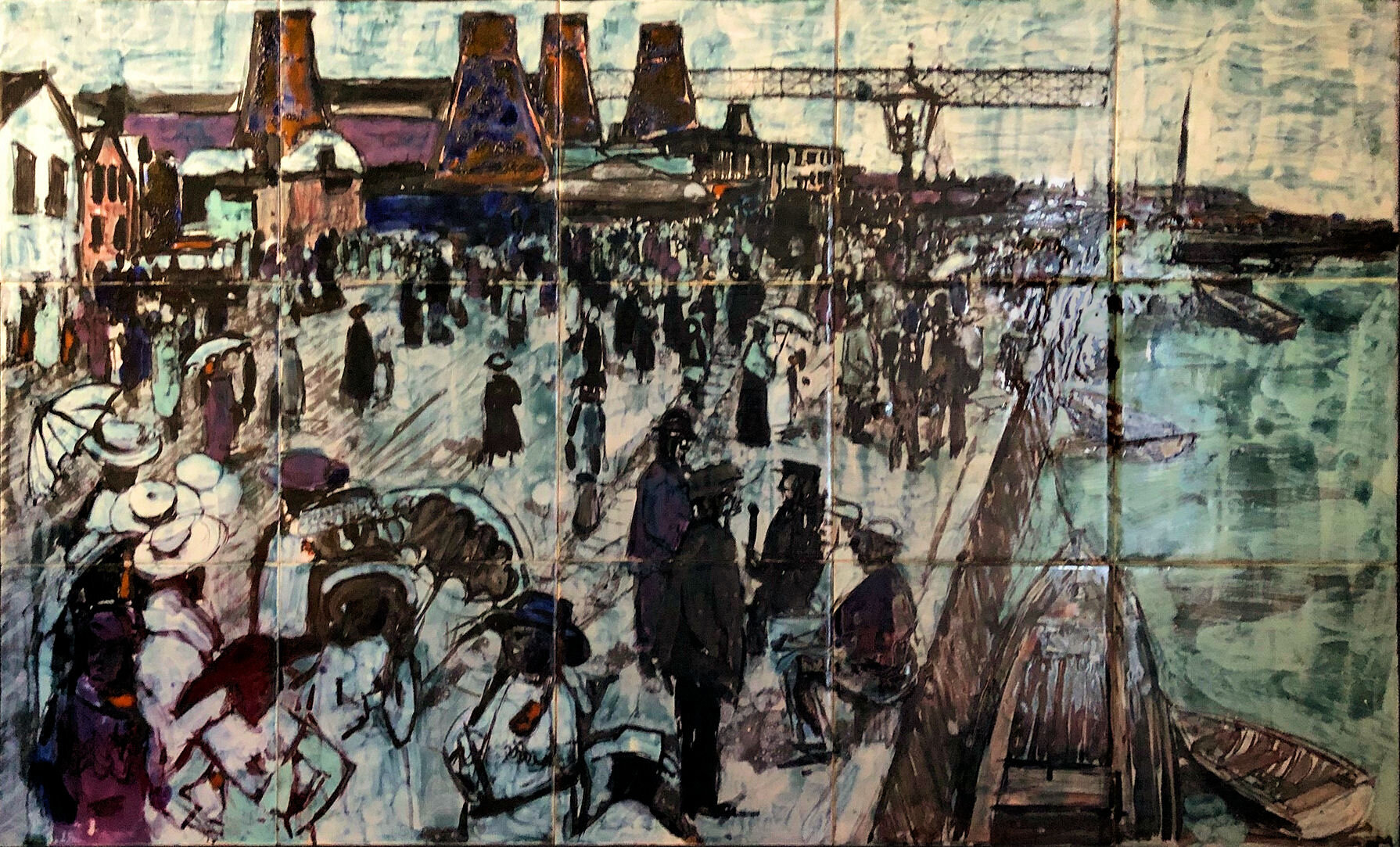
(April 2021) Poole Pottery and the Quay by Tony Morris, 1963-4.



